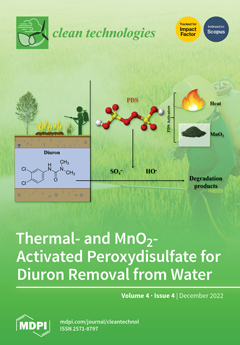One of society’s major current challenges is carbon dioxide emissions and their consequences. In this context, new technologies for carbon dioxide (CO
2) capture have attracted much attention. One of these is carbon capture and utilization (CCU). This work focuses on the
[...] Read more.
One of society’s major current challenges is carbon dioxide emissions and their consequences. In this context, new technologies for carbon dioxide (CO
2) capture have attracted much attention. One of these is carbon capture and utilization (CCU). This work focuses on the latest trends in a holistic approach to carbon dioxide capture and utilization. Absorption, adsorption, membranes, and chemical looping are considered for CO
2 capture. Each CO
2 capture technology is described, and its benefits and drawbacks are discussed. For the use of carbon dioxide, various possible applications of CCU are described, starting with the utilization of carbon dioxide in agriculture and proceeding to the conversion of CO
2 into fuels (catalytic processes), chemicals (photocatalytic processes), polymers, and building supplies. For decades, carbon dioxide has been used in industrial processes, such as CO
2-enhanced oil recovery, the food industry, organic compound production (such as urea), water treatment, and, therefore, the production of flame retardants and coolants. There also are several new CO
2-utilization technologies at various stages of development and exploitation, such as electrochemical conversion to fuels, CO
2-enhanced oil recovery, and supercritical CO
2. At the end of this review, future opportunities are discussed regarding machine learning (ML) and life cycle assessment (LCA).
Full article





